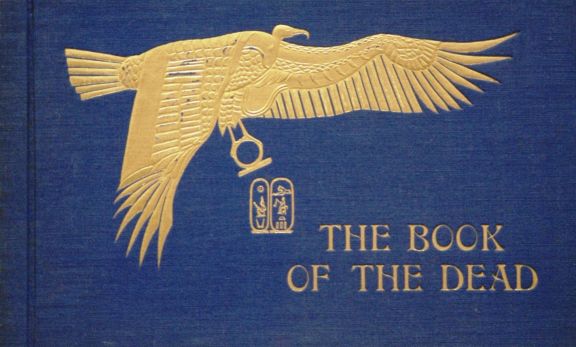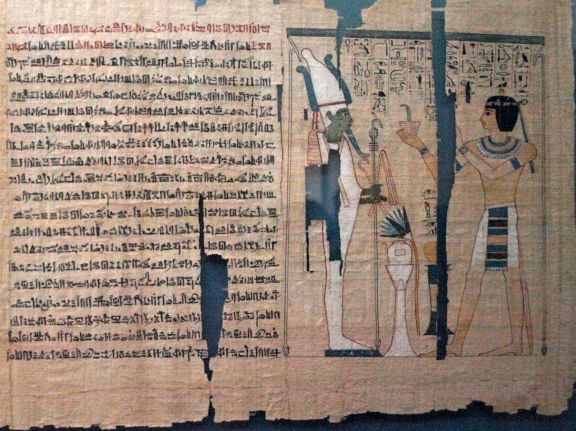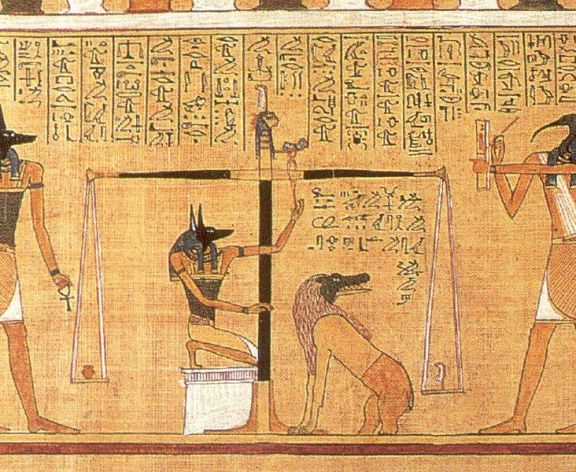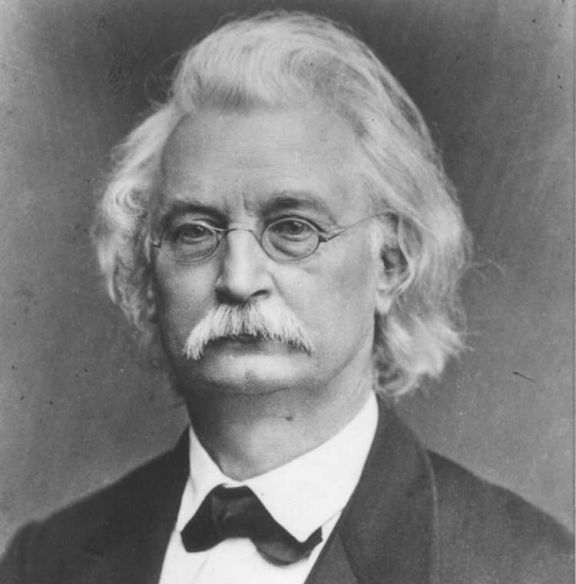The Book Of The Dead - IntroductionWelcome to 'The Book of the Dead'. The original files for this section came from a site Ancient Egypt Archives, a great site built by Jon Bodsworth, which sadly closed March 2011. These in turn came from a book for which, I managed to find this description: Published in Egypt sometime between the First and Second World Wars, this book was titled 'Book of the Dead and Elysian Fields'. Some references date the publication from as early as 1925 but the book itself is not dated. 
Cover for The Book of the Dead and Elysian Fields I have done a little research and have found out a few things, which may OR MAY NOT be true. Also, Ancient Egypt lasted a very long time and customs changed over time, so please treat what I have written with a great degree of caution. But I think that the basic ideas are sound. The Book of the Dead is a name given to a group of texts that were left with the deceased. The pages contained spells and advice to help the dead navigate the afterlife. There was no one fixed version and the texts were often customized for their owner. 
Papyrus of a section of The Book Of the Dead To use a modern analogy, once you were dead you joined a platform video game. There you had to navigate obstacles and deal with ferocious beasts. If you failed you would be destroyed and exist no more. The Book was your guide to help you through the ordeal. Your journey culminated in the weighing of your heart. Once you entered the Hall of Maat, the God Anubis weighed your heart. If it was lighter than a feather, then you had led a good life and were entitled to immortal afterlife. If you failed the test, the God Ammut would suddenly appear and you'd be devoured and that would be the end of you! 
Weighing of the Heart The spells and also "crib" sheets could also appeared on the walls and items of the tomb. So that is what I believe we are seeing in the pages of the book. Furthermore, "Elysian Fields" is one way of referring to the Ancient Egyptians idea of paradise. These are also covered in the book. Anyway, I hope that I have got it at least half-right. But no matter what, these are fascinating images. 
Photograph of Carl Richard Lepsius One last little fact that I thought worth mentioning, is although the existence of the Book of the Dead was known from the Middle Ages, what it exactly meant was a complete mystery. In 1842 Karl Richard Lepsius published the first translation of a manuscript and he also called it "Book of The Dead". I think that must have been a really fascinating project and an awesome experience to be the first person for so many centuries to actually understand the text. Something that I think seems to resonate in his eyes, but perhaps it is just me making too much of things! |